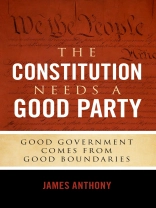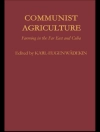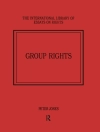One good political party will make everything work well.
What’s wrong with U.S. politics today is that our representatives ignore the Constitution.
The solution is simple: Design a political party to elect representatives who will fully use their constitutional powers, keeping our government within its required good boundaries. This will leave us free to pursue happiness ourselves.
The Constitution Needs a Good Party explains:
- Why every election leaves us with a solid majority of Progressive Democrats + Progressive Republicans, who violate the Constitution.
- How to list these violations as the grievances in a new party’s declaration of independence from past parties, creating a pledge to support the Constitution through specific actions.
- How to reuse the Constitution to structure a new party to keep the grassroots in charge.
- How the Constitution-respecting presidents George Washington and Ronald Reagan were the most electable ever.
- How a well-designed party would not have been rigged in 2016 to nominate Donald Trump, and the party’s grassroots would have nominated Ted Cruz.
When the United States followed the Constitution better from 1789 through 1913, we changed the world. We can change the world again.
Table of Content
Preface
Part 1: A Good Party
1 Tails Wag Dog
2 Nation’s Structure Is Best Model for Party’s Structure
3 Nation’s Name Is Best Model for Party’s Name
4 Nation’s Declaration Is Best Model for Party’s Declaration
5 Nation’s Constitution Is Best Model for Party’s Constitution
6 Prior Parties’ Lawlessness Is Best Guide on Party’s Laws
7 Party’s Processes Teach Nation’s Processes
8 Party’s Firm Boundaries Define Contours of Transition
9 Build to Last
10 Note on Next Steps for Individuals
Part 2: USA Constitution
I Legislative
II Executive
III Judicial
IV States
V Amendment
VI Supreme-Law Support
VII Ratification
1 Religion and Speech
2 Arms
3 Quartering
4 Searches and Seizures
5 Life, Liberty, and Property
6 Criminal Procedures
7 Civil Procedures
8 Bail and Punishments
9 People’s Rights
10 States’ and People’s Powers
11 Suits against States
12 Presidential Election
13 Slavery Abolition
14 Former-Slave Protection
15 Former-Slave Voting
16 National Income Tax
17 Senator Election
18 Prohibition
19 Women Voting
20 Presidential Succession
21 Prohibition Repeal
22 Presidential Term Limit
23 DC Presidential Electors
24 Poll Tax
25 Presidential Incapacity
26 Age 18 Voting
27 Congressional Compensation
Part 3: USA Declaration of Independence
References
Index
About the author
James Anthony has spent his career researching proven solutions and reusing them for new applications. A chemical engineer with a master’s degree in mechanical engineering, he lives in St. Peters, Missouri.












